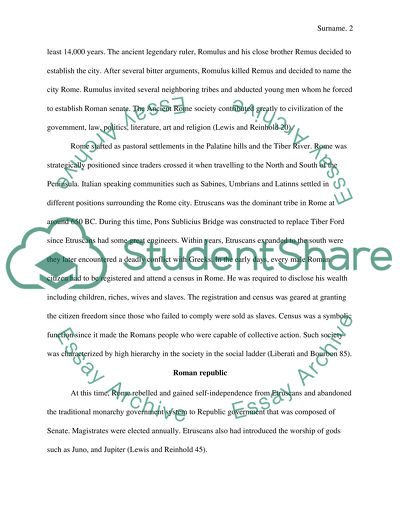Cite this document
(“Rome civilization Essay Example | Topics and Well Written Essays - 2500 words”, n.d.)
Retrieved from https://studentshare.org/history/1403280-rome
Retrieved from https://studentshare.org/history/1403280-rome
(Rome Civilization Essay Example | Topics and Well Written Essays - 2500 Words)
https://studentshare.org/history/1403280-rome.
https://studentshare.org/history/1403280-rome.
“Rome Civilization Essay Example | Topics and Well Written Essays - 2500 Words”, n.d. https://studentshare.org/history/1403280-rome.


